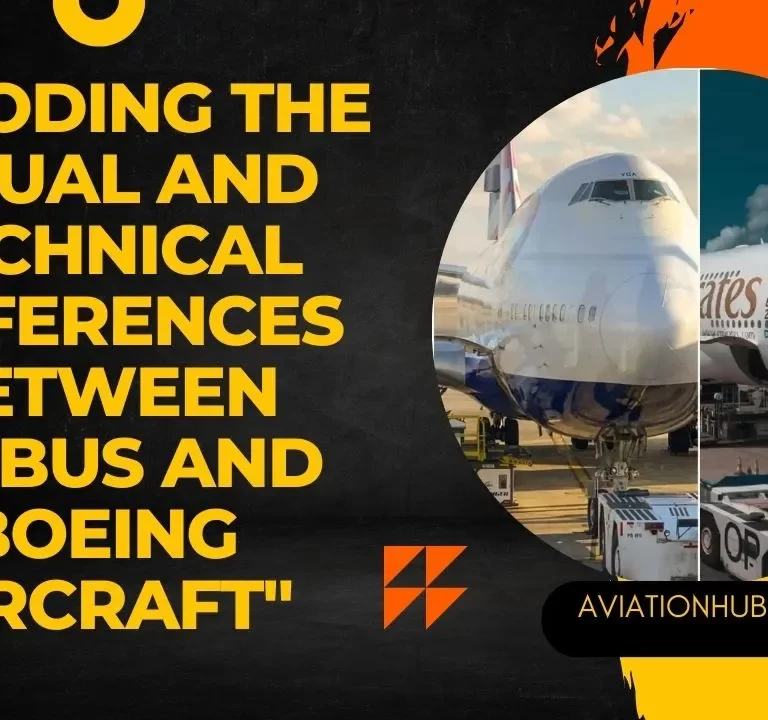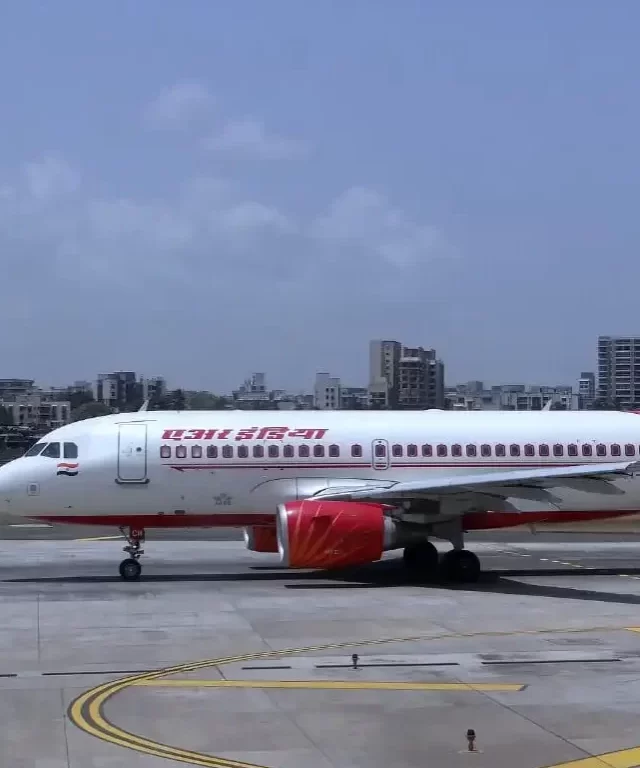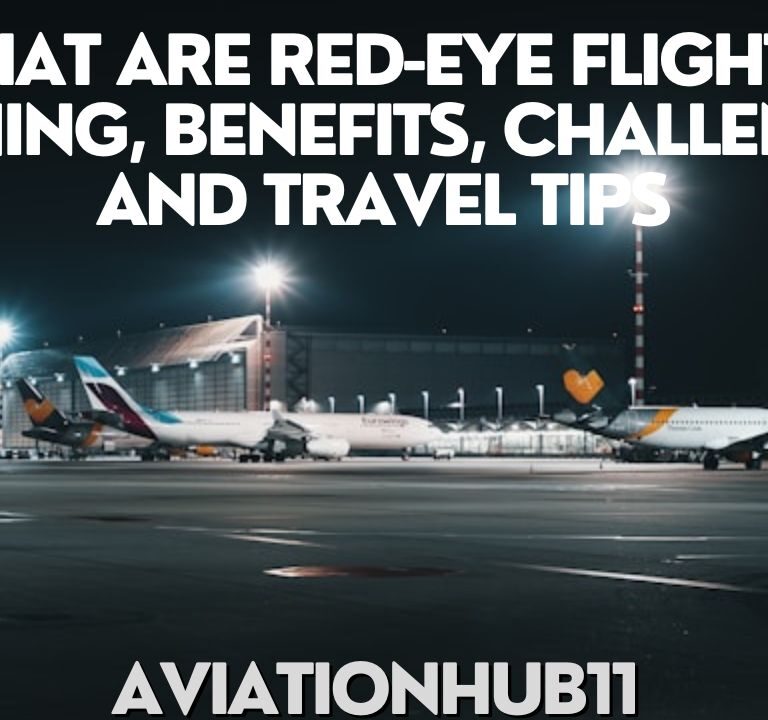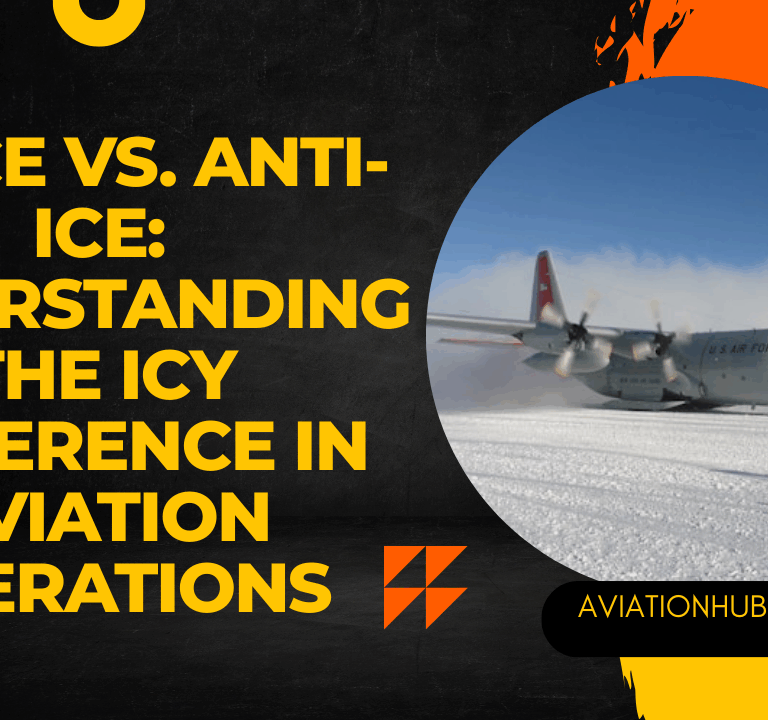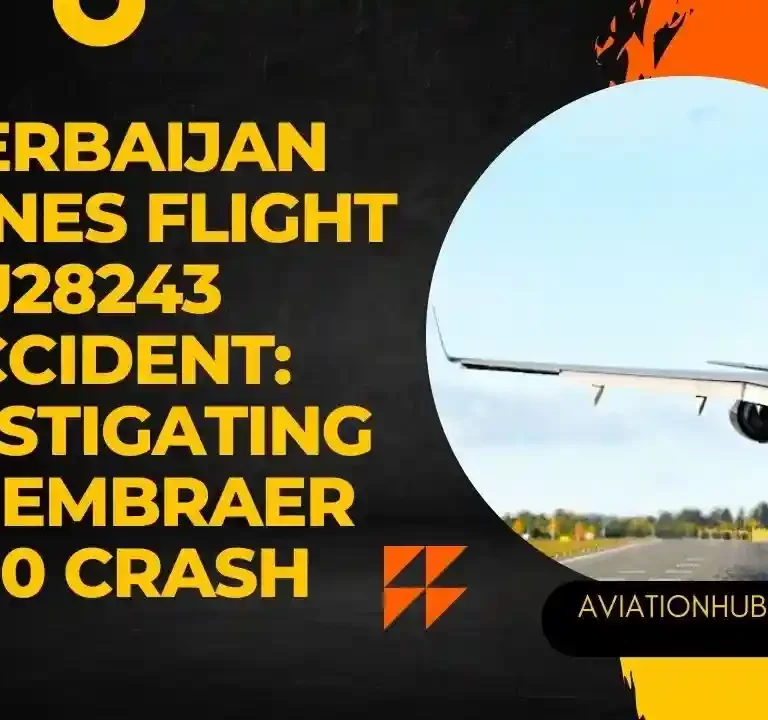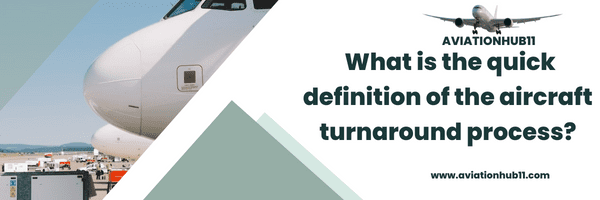
Aircraft Turnaround
quick definition of the aircraft turnaround process. It is a period required between the landing to take off of an aircraft it included the process like Disembarking of passengers, offloading of baggage and cargo, refueling of the aircraft, Clearing, and sanitization of aircraft, Catering, loading of baggage and cargo, Boarding of passengers and final checks check.

When the Aircraft land and then taxies towards the gate the turnaround period has started. Airlines have to ensure that turnaround time should be reduced as must as be possible to save costs, airlines have to pay charges to the airport to park and use gates at the airport. When the aircraft comes to a complete stop and engines are turned off and aircraft wheels are chocked.
What is an aircraft?
It is a vehicle that flies against the gravitation force by creating trust from engines and lift from wings and it is heavier than air. They are usually controlled by the wings and rudder that help in the movement of the aircraft. also Understanding Aircraft on Ground (AOG) in the Aviation Industry!
Now have a look at the process involved in the turnaround of Aircraft.
The process involved in the turnaround of Aircraft included steps mentioned below! Arrival At the gate
Once the aircraft arrives at the gate and the Pilot in command turned off the engine and the ground crew chock the wheel and cones are placed at the tips of the wings.
Disembarking
This is the process of getting off of the Aircraft when aircraft engines are off and wheels are chocks. Once the Aircraft comes to a complete halt and aerobridge or stairs are attached to the door of the aircraft. After the Covid-19 to ensure social distancing Disembarking will be done according to seat number starting from the row and then moving forwards. Starting from the First class followed by the lower classes.
Ground Support Equipment
- GSEs are found in apron their main rule is to serve the aircraft and play important role in process involved in the turnaround of Aircraft they are the set of types of equipment that ensure quick and efficient turnaround of the aircraft. most of the GSEs are not of the airline they are outsourced by third parties such as refueling vehicles of Aviation fuel companies such as Indian Oil Aviation.
List of Ground Support Equipment
- Mobile Passenger Staires
- Catering Truck
- Refueling truck
- Toilet truck
- Tow truck
- Baggage Conveyor
- Ground Power Unit (GPU)
- Chocks
- Air start unit
- De/anti-icing vehicles
- Aircraft rescue and firefighting
- A-Mobile Passenger Staires
They are portable stairs that are attached to aircraft once the engines are turned off. They are mostly used when Gate Doesn’t have an Aerobridge so Mobile Passengers stairs are used to help the passenger to get off of the aircraft.
- B-Catering truck
Catering Trucks are mostly not of airlines. Airlines mostly outsourced catering services. This truck carried food into the aircraft they have a mechanism to lift the container that allows to transfer of food directly to the aircraft and also it is temperature controlled.
Major aviation catering services providers are.
- LSG Sky Chefs
- Emirates Flight Catering
- Taj SATS Air Catering Limited
- C-Refueling truck.
Most of the time when aircraft land at the airport and prepare for the next flight the aircraft need to be refueled and get ready for the next flight. The aviation fuel company usually provides refueling trucks and manages fueling services in the airport. Airports mostly have Fuel tanks located underground and fueling truck help to transfer the fuel from the ground to the aircraft, also in small aircraft refueling tanks themselves have a tank that store fuel.
D-Major Aviation Fuel companies.
- Bharat Petroleum Corporation Limited (BPCL)
- Shell MRPL Aviation Fuels & Services Ltd
- IndianOil Aviation Service
- E- lavatory service truck
The name itself tells us the purpose of the lavatory service truck. It is used to remove lavatory waste from aircraft and also to disinfect the tank by using special disinfectant liquid. The truck operator parks the truck near the aircraft and put the pip to the aircraft lavatory tank housing located at the bottom of the aircraft.
- F-Tow truck
They are also called pushback trucks. They help aircraft to push back from the gate. They help in reducing the use of Aviation fuel. Now a day semi-automatic robots called TaxiBots are used for the pushback of aircraft.
- G-Baggage Conveyor
The Baggage Conveyor help in taking the Cargo and Baggage from the aircraft to the Unit Load Device( ULDs) and also in loading cargo.
- H-Ground Power Unit (GPU)
Ground Power Unit help to provide power to the aircraft electronics system and air conditioning system when the aircraft is parked at the gate to save fuel and emission as aircraft can turn off the engine to save fuel and power can be given by the airport by the wire connect to aircraft.
- I-Chocks
They are the Blocks placed on the wheels of the aircraft when the aircraft comes to complete half and engines are turned off with parking breaks applied they are applied in addition to the breaking break to ensure safety.
- J-Air start unit
They are used to start the engine of the aircraft. When the aircraft is unable to start its engine. This system blows the air inside the engine which causes the engine blades to move at a high speed that helps in starting the engine.
- K-De/anti-icing vehicles
Deicing is the process of removing Ice from the top surface of the aircraft to ensure moving parts work fine such as Flaps and spoilers. Special chemicals are used to remove ice as they also prevent the reformation of ice on the surface.
L-Aircraft rescue and firefighting
They act as a support system during any incident or accident at the airport. They are well-trained to reach the area and start the rescue process at soon as possible. They know how to rescue crew and passengers from aircraft and how to stop a fire in case of emergency.
Did You Know?
During the First and last flight, the ARFF gives a water Salute.
Boarding
Boarding or embarking of the passenger is the process of allowing the passenger to get into the aircraft this can be done in 2 ways
- Aerobridge
- Ladder
Airline staff scan the boarding pass at the gate before allowing passengers to get into the aircraft and also ensure to get details of No Show Passengers and offload a luggage
Normally Boarding Started with First and Business Class passengers followed by an economic class in a sequence of the last row to first.
Final Checks
This included visual checks done by the captain before the flight which include checks about aircraft structures and also do pre flights checks.
- What Are Red-Eye Flights? Meaning, Benefits, Challenges, and Travel Tips
- De-Ice vs. Anti-Ice: Understanding the Icy Difference in Aviation Operations
- The Rise of Low-Cost Carriers in India: Is Full-Service Aviation Fading?
- Azerbaijan Airlines J2 Flight 8243 Accident: Investigating the Embraer E190 Crash
- “BCAS Relaxes Airline Security Rules: Airport Operators Like GMR Eye Entry into International Airline Security Services”
